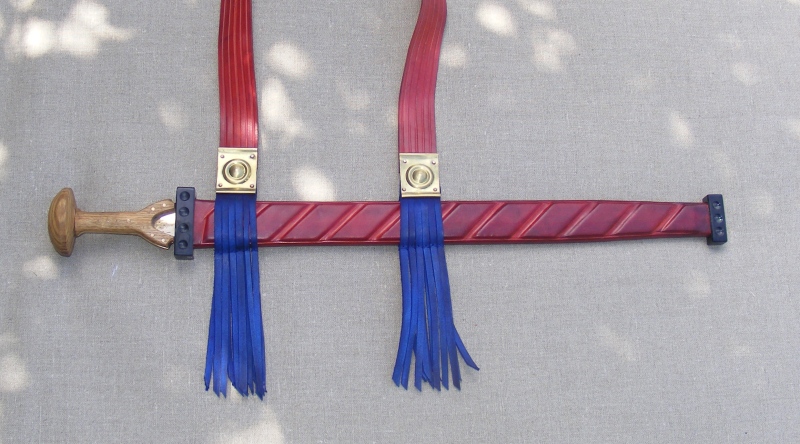Here is an interesting scabbard I have recently completed for a Paul Burridge sword.
This is an area that I know very little about, and so have been heavily lead by the client. I say this because there was very little exisiting evidence of what form these took or were or how they were constructed and so we interepreted really just a single source taken from here http://commons.wikimedia.org/wiki/File:Mykonos_vase.jpg
The Mykonos vase holds a clay relief of the Trojan horse and so is contemporary with the sword for which it was made. From this relief it is obviously difficult to extrapolate details, however some things were clear.
The scabbard was on a single baldric. The fringe tassels were a clear feature and perhaps part of the suspension and the top and bottom blocks were likely to have been a seperate component to the leather cover. There is a chracteristic 'slatted' look to the scabbard surface.
I made some gross assumptions on what I could see and how things are made and although this is not to be recommended from a single source, we had little choice - so here it is.
The baldric was straightforward and sized to the owner.
The finge tassels pass through the rear scabbard leather but there is no indication on the front surface of the pot that this is the case, so I stiched them just under the scabbard to hold the sword level.
The top and bottom block were unlikely to be bronze (sheet) as otherwise we would have a few of these on record, so I took them to be organic. Ivory is out so I opted for horn.
The 'slatted' pattern I put in over leather formers, though I was suggested a twist of bronze sheet for these (thank you for your guidance - you know who you are) the client preffered this route.
I hope you like our interpretation of it.
Tod
![762px-Mykonos_vase[1].jpg](files/762px_mykonos_vase1_118.jpg)
